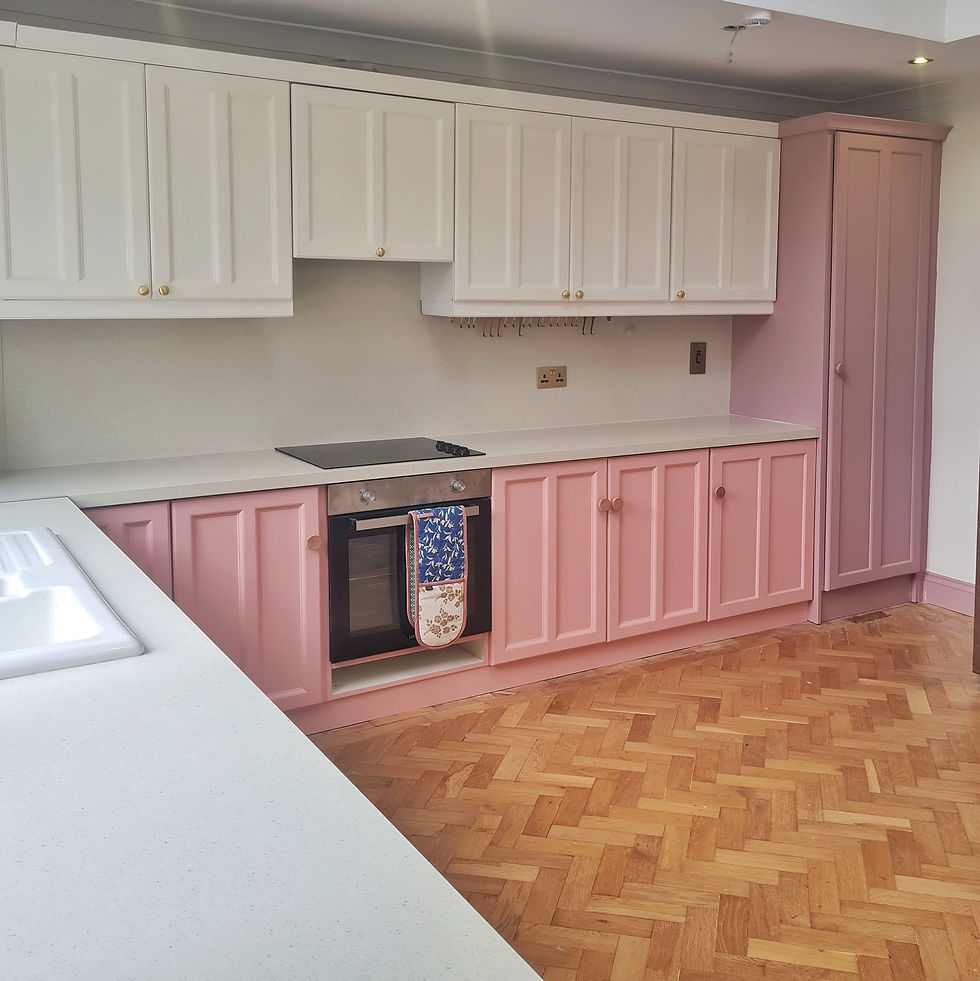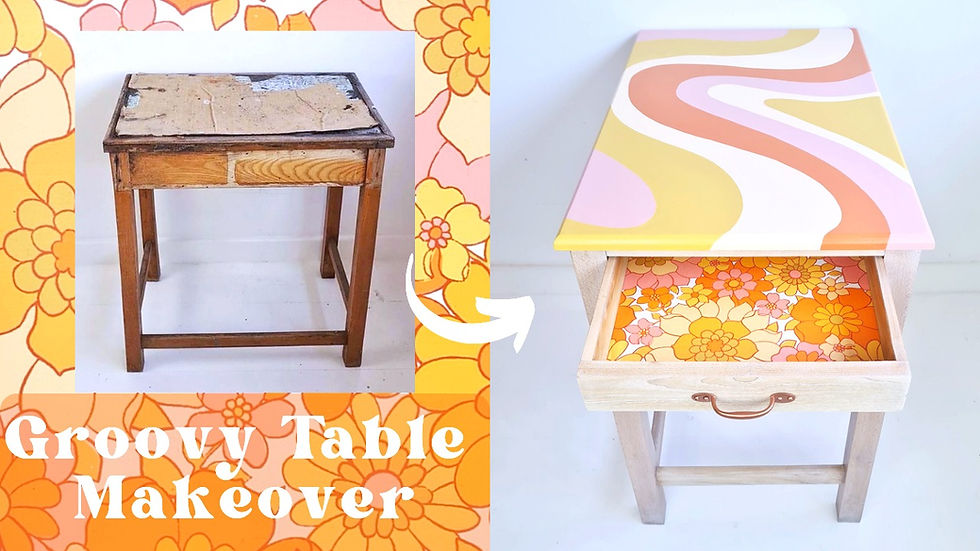Painting Chevrons
- Sarah Murphy-Colourfulsaz

- Aug 25, 2021
- 2 min read

Hi guys, I've finally gotten around to updating my blog. What better way to start than with those pesky chevrons everybody looooves to paint....NOT. When I'm painting complex designs most of the messages I get are asking how I have the patience to do this. so I want to break the rules and share all my secrets. Because honestly, anybody can do this stuff.
Today I'll be sharing how to recreate this pattern on a piece of furniture. In my video tutorials below you will see three different techniques for creating chevrons. Let's jump into it, shall we?

Important materials for this:
A set square or right-angled ruler
Delicate masking tape
Rollers (Two Fussy Blokes will change your life)
As always be sure to prep your piece correctly, check out my previous blog post on this here. For the purposes of this blog post, we will focus on the actual chevron design and achieving this pattern as it's not easy.
The Method:
Paint- Use a roller to apply your base colour and allow it to dry
Boring maths bit- Draw a line down the centre where you want the tip of the triangle shape to meet.
More maths- Then mark where you want the base of the triangle to come from- this should be a straight line perpendicular to your line in the centre (this is where your leaving cert maths skills are REALLY put to the test. I TOLD you you'd use this stuff someday. God I love Maths)
Masking tape time- place a piece from the base marking of your triangle to the centre line you drew down the middle of your tray. This is where you can make your chevrons as steep or as gradual sloping as you want.
Completing the design-Once you have the first triangle done you are honestly laughing. Then all you have to do is use little bits of masking tape as spacers to allow you to get the exact same distance between each chevron and also the same angle each time.
The corners- the stripes at the corners are the absolute worst but they're just fiddly not as complicated as the maths we had to do back there. I don't have many tips for this part except to maybe use smaller pieces of masking tape when working in a small space like a tray. So persevere, and make sure to step back from it to make sure it doesn't look wonky at the edges.
Seal the tape- Use the base colour to seal the tape before applying the next colour. This is especially important if the colour you're using is very different to your base colour and it will prevent bleeding through the tape. For more masking tape tips I have an entire post on this.
If the above doesn't explain this well the below videos should fill in any blanks.
I really hope this helps and if you have any questions leave a comment below or drop me a message. If you try this out be sure to tag me!
Sarah x










Comments